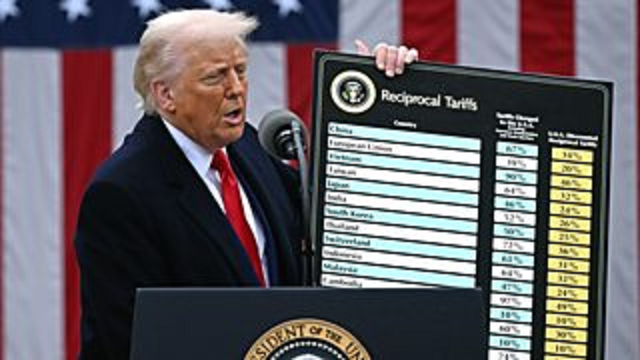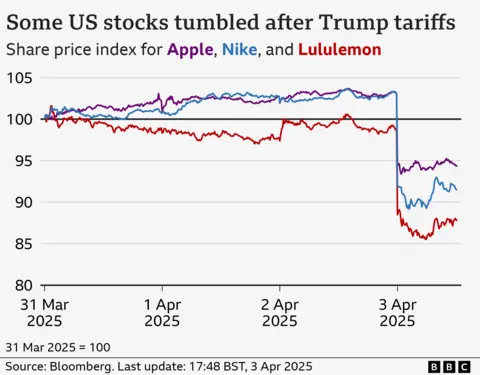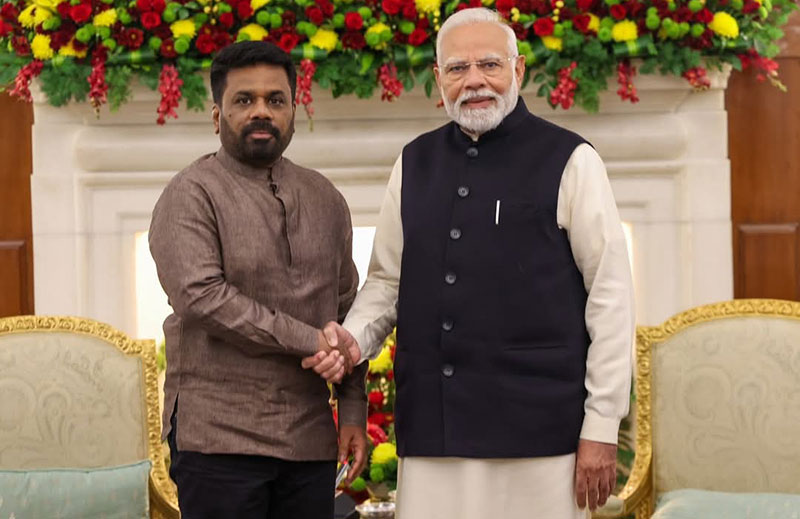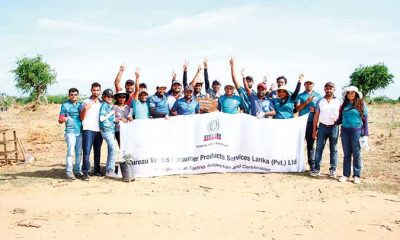Business
Defending Mangroves and Afforesting Underwater

Having had a keen interest in marine conservation since the inception of its environmental arm, Dilmah Tea is strengthening its investments in blue carbon – particularly mangrove conservation and sustainable seaweed harvesting in keeping in line with the UN decade of (ecosystem) restoration in 25 acres of land in Kappaladi Kite Lagoon in Kalpitiya, a company news release said.
Dilmah Conservation (DC), the sustainability arm of the tea company, is restoring mangroves. Currently a nursery with over 800 mangroves saplings consisting of seven species has been established and once at a ready height the saplings are planted in the degraded mangrove forest area. Meanwhile in Mannar, around 10 acres of land are being used for seaweed cultivation through sustainable methods, the release said.
Investing in blue carbon by restoring such ecosystems can contribute towards climate resilience as mangroves and Seaweed are better at storing carbon that terrestrial forests. Mangroves can absorb up to five times more carbon than forest trees. Similarly, seaweed generates more oxygen that land plants and absorbs more carbon too, it explained.
“A standout feature of Dilmah Conservation has been its collaborations and partnerships with different stakeholders and establishing the project on a strong scientific foundation. The organization partly attributes public-private partnerships for the long-term success of its marine conservation-related projects and therefore collaborates with the Marine Environmental Protection Authority (MEPA) and National Aquaculture Development Association (NAQDA) and maintains dialogues with universities and independent organizations such as Pearl Protectors,” the release said.
“Under the Defending Mangroves project, a baseline survey in collaboration with MEPA helped identify types of mangroves existing in the area, suitable locations for restoration, and ideal mangrove species suited to the area. Hands-on experiential learning sessions with schools in the area have also been instrumental in generating awareness about the importance of these ecosystems.
“For maintaining a nursery Dilmah has employed community members. The value of mangrove ecosystems stands in stark contrast to the dearth of available research. Therefore, Dilmah will establish a research station to strengthen the success of the project and make it replicable in other parts of the island as well.”
Under the sustainable seaweed cultivation project: Afforesting Underwater, DC has sought technical expertise and works closely with the National Aquaculture Development Association (NAQDA) to develop community fishermen into sustainable seaweed farmers. So far, around 10 acres have been cultivated in Pesalai, and plans to expand to other parts of the coastline are underway, the release further said.
“As conservation and culture overlap Dilmah takes into consideration sustainable livelihood upliftment in its projects. Thereby, in a collaborative effort seaweed agripreneurs were empowered through an incubator program known as the Lost Ingredients Lab.
“Education and awareness are one of the important pillars for Dilmah Conservation, thus the organization has consecutively sponsored the Pearl Protectors’ World Ocean Summit – a landmark event spearheaded by the independent marine conservation organization. In 2021 this was the largest virtual summit in Sri Lanka. This year the event was held at One Galle Face Mall to the enthusiasm of the public.”
Muditha Katuwawala, Founder of Pearl Protectors said, “We are absolutely delighted to have Dilmah Conservation onboard towards celebrating World Oceans Day for the second year. The Pearl Protectors have been consecutively celebrating world oceans day through knowledge sharing, art competitions, and inspiring the generation of Ocean enthusiasts. We hope our collaborative efforts will continue to positively impact the marine environment in Sri Lanka”
Driven by Dilmah Tea founder’s vision of creating a better tea for people and the planet, the tea company has constantly initiated projects to impact terrestrial ecosystems. Marine ecosystems are also close to Dilmah’s heart. In the past initiatives such as enabling the gazetting of an important reef called Kayernkerni in Kalkudah as a marine sanctuary, education, and awareness creation about Dugons in a fishing community, and keeping 50 km of the coastlines free by employing 50 caretakers, the release concluded.
Business
Trump tariffs trigger steepest US stocks drop since 2020 as China, EU vow to hit back

Global stocks have sunk, a day after President Donald Trump announced sweeping new tariffs that are forecast to raise prices and weigh on growth in the US and abroad.
Stock markets in the Asia-Pacific region fell for a second day, hot on the heels of the US S&P 500, which had its worst day since Covid crashed the economy in 2020.
Nike, Apple and Target were among big consumer names worst hit, all of them sinking by more than 9%.
At the White House, Trump told reporters the US economy would “boom” thanks to the minimum 10% tariff he plans to slap on imports in the hope of boosting federal revenues and bringing American manufacturing home.
The Republican president plans to hit products from dozens of other countries with far higher levies, including trade partners such as China and the European Union. China, which is facing an aggregate 54% tariff, and the EU, which faces duties of 20%, both vowed retaliation on Thursday.
Tariffs are taxes on goods imported from other countries, and Trump’s plan that he announced on Wednesday would hike such duties to some of the highest levels in more than 100 years.
The World Trade Organization said it was “deeply concerned”, estimating trade volumes could shrink as a result by 1% this year.
Traders expressed concern that the tariffs could stoke inflation and stall growth.
In early trading on Friday, Japan’s benchmark Nikkei 225 index fell by 1.8%, the Kospi in South Korea was around 1% lower and Australia’s ASX 200 dipped by 1.4%.
On Thursday, the S&P 500 – which tracks 500 of the biggest American firms – plunged 4.8%, shedding roughly $2tn in value.
The Dow Jones closed about 4% lower, while the Nasdaq tumbled roughly 6%. The US shares sell-off has been going on since mid-February amid trade war fears.
Earlier, the UK’s FTSE 100 share index dropped 1.5% and other European markets also fell, echoing declines from Japan to Hong Kong.
On Thursday at the White House, Trump doubled down on a high-stakes gambit aimed at reversing decades of US-led liberalisation that shaped the global trade order.
“I think it’s going very well,” he said. “It was an operation like when a patient gets operated on, and it’s a big thing. I said this would exactly be the way it is.”
He added: “The markets are going to boom. The stock is going to boom. The country is going to boom.”
Trump also said he was open to negotiating with trade partners on the tariffs “if somebody said we’re going to give you something that’s so phenomenal”.
On Thursday, Canada’s Prime Minister Mark Carney said that country would retaliate with a 25% levy on vehicles imported from the US.
Trump last month imposed tariffs of 25% on Canada and Mexico, though he did not announce any new duties on Wednesday against the North American trade partners.

Firms now face a choice of swallowing the tariff cost, working with partners to share that burden, or passing it on to consumers – and risking a drop in sales.
That could have a major impact as US consumer spending amounts to about 10% – 15% of the world economy, according to some estimates.
While stocks fell on Thursday, the price of gold, which is seen as a safer asset in times of turbulence, touched a record high of $3,167.57 an ounce at one point on Thursday, before falling back.
The dollar also weakened against many other currencies.
In Europe, the tariffs could drag down growth by nearly a percentage point, with a further hit if the bloc retaliates, according to analysts at Principal Asset Management.
In the US, a recession is likely to materialise without other changes, such as big tax cuts, which Trump has also promised, warned Seema Shah, chief global strategist at the firm.
She said Trump’s goals of boosting manufacturing would be a years-long process “if it happens at all”.
“In the meantime, the steep tariffs on imports are likely to be an immediate drag on the economy, with limited short-term benefit,” she said.
On Thursday, Stellantis, which makes Jeep, Fiat and other brands, said it was temporarily halting production at a factory in Toluca, Mexico and Windsor, Canada.
It said the move, a response to Trump’s 25% tax on car imports, would also lead to temporary layoffs of 900 people at five plants in the US that supply those factories.
On the stock market, Nike, which makes much of its sportswear in Asia, was among the hardest hit on the S&P, with shares down 14%.
Shares in Apple, which relies heavily on China and Taiwan, tumbled 9%.
Other retailers also fell, with Target down roughly 10%.
Motorbike maker Harley-Davidson – which was subject of retaliatory tariffs by the EU during Trump’s first term as president – fell 10%.
In Europe, shares in sportswear firm Adidas fell more than 10%, while stocks in rival Puma tumbled more than 9%.
Among luxury goods firms, jewellery maker Pandora fell more than 10%, and LVMH (Louis Vuitton Moet Hennessy) dropped more than 3% after tariffs were imposed on the European Union and Switzerland.
“You’re seeing retailers get destroyed right now because tariffs extended to countries we did not expect,” said Jay Woods, chief global strategy at Freedom Capital Markets, adding that he expected more turbulence ahead.
[BBC]
Business
Overcoming initial delays, Sampur solar energy project becomes a reality

The long-anticipated Sampur solar energy project is finally set to break ground, marking a significant leap in Sri Lanka’s renewable energy ambitions. After years of delays and negotiations, the Power Purchase Agreement (PPA) for the Surya Danavi 120 MW Solar Farm in Santhosapuram, Trincomalee District, was officially signed on April 1st between the National Thermal Power Corporation of India (NTPC) and the Ceylon Electricity Board (CEB).
This initiative, spearheaded by Trincomalee Power Company Limited (TPCL), a 50:50 joint venture between NTPC and CEB, is expected to be a game-changer in the country’s energy landscape.
The project will be implemented in two phases. Phase 1 involves the installation of a 50 MW solar plant along with the construction of 37 km of 220 kV transmission lines connecting Sampur to Kappalthurai. In Phase 2, an additional 70 MW capacity will be added, complemented by 77 km of transmission lines extending from Kappalthurai to New Habarana.
President Anura Kumara Dissanayake played a crucial role in renegotiating the unit tariff to 5.97 US Cents, which includes a battery storage system to mitigate fluctuations in solar power generation.
According to Ministry of Energy Director General Eng. Pubudu Niroshan Hedigallage, this project is a testament to Sri Lanka’s commitment to renewable energy and energy security.
“For years, Sampur has been at the center of numerous energy debates. This project not only signifies the shift from fossil fuels to cleaner alternatives but also strengthens our grid resilience. The inclusion of battery storage makes this project particularly promising, said Hedigallage.
He further emphasized the importance of strategic partnerships in achieving energy sustainability. “Collaborations like the one between NTPC and CEB show the potential of cross-border energy projects. With India’s vast experience in solar energy, Sri Lanka can benefit immensely in terms of both technology transfer and cost efficiency.”
The Sampur region has long been embroiled in energy-related controversies. Previously earmarked for a coal power plant, the area saw fierce opposition from environmental activists and policy shifts that led to its cancellation. The transition from coal to solar in Sampur is seen as a redemption of sorts, aligning with global climate goals and Sri Lanka’s own commitment to increasing renewable energy in its power mix.
by Ifham Nizam
Business
SriLankan Airlines positioning Sri Lanka as a hub for culturally discerning travellers

SriLankan Airlines is amplifying its commitment to nurturing Sri Lanka’s performing arts scene, leveraging classical Western music and homegrown talent to position the island as a hub for culturally discerning travelers.
The national carrier partnered with the Gustav Mahler Society of Colombo (GMSC) to support the 2025 Spring Concert at Colombo’s Lionel Wendt Theatre on March 29.
The event showcased Sri Lankan classical guitarist Jude Peiris alongside Japanese artists Hiroshi Kogure (violin) and Miyuki Funatsu (soprano), blending local and global artistry. This marks the airline’s sixth collaboration with GMSC, reinforcing its three-year role as the society’s Official Airline Partner.
Dimuthu Tennakoon, Head of Commercial at SriLankan Airlines, emphasised the strategic value of performing arts saying: “World-class cultural productions can transform Sri Lanka into a magnet for travelers seeking immersive experiences. By honing local talent, we unlock immense potential in the growing cultural tourism sector.”
Deepal Perera, Manager of Corporate Communications, highlighted the airline’s dual role: “We’re not just bridging geographies—we’re fostering global exchanges of music and tradition. Sri Lankan artists deserve platforms to shine internationally, and partnerships like this propel them forward.”
GMSC’s Music Director, Srimal Weerasinghe, praised the airline’s impact: “SriLankan Airlines has been instrumental in developing Western classical music here, sponsoring visiting professionals and helping build Sri Lanka’s first professional orchestra. Their support has elevated our global reputation.”
Beyond GMSC, SriLankan Airlines continues to partner with local arts groups and diplomatic missions, cementing its role as a cultural ambassador.
By Sanath Nanayakkare
-

 Sports5 days ago
Sports5 days agoSri Lanka’s eternal search for the elusive all-rounder
-

 News4 days ago
News4 days agoBid to include genocide allegation against Sri Lanka in Canada’s school curriculum thwarted
-

 News6 days ago
News6 days agoGnanasara Thera urged to reveal masterminds behind Easter Sunday terror attacks
-

 Sports1 day ago
Sports1 day agoTo play or not to play is Richmond’s decision
-

 News5 days ago
News5 days agoComBank crowned Global Finance Best SME Bank in Sri Lanka for 3rd successive year
-

 Features5 days ago
Features5 days agoSanctions by The Unpunished
-

 Features5 days ago
Features5 days agoMore parliamentary giants I was privileged to know
-

 Latest News3 days ago
Latest News3 days agoIPL 2025: Rookies Ashwani and Rickelton lead Mumbai Indians to first win


















